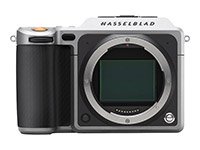DxOMark tests the Hasselblad X1D: Best commercially-available medium format sensor
posted Thursday, October 26, 2017 at 4:00 PM EDT

Does it feel like a Hasselblad X1D day here at Imaging Resource? Earlier we shared the video from Hasselblad Chief of Strategy Ming Thein and his X1D experience in Iceland. Now we have news from DxOMark, who have reviewed the X1D sensor.
As a "cropped" medium format sensor, the sensor found in the X1D-50C (and Fujifilm GFX 50S) is not quite as large as a traditional 6 x 4.5 medium-format frame (56 x 42mm), but it is still quite large at 43.8 x 32.9mm. The sensor offers 70 percent more surface area than a traditional full-frame 35mm digital sensor, thus allowing the X1D's 50-megapixel sensor to deliver the best high ISO performance DxOMark has seen from a commercially-available medium format sensor.

While the X1D's dynamic range performance is very impressive, it doesn't set itself apart from the new full-frame Nikon D850 in that regard. Low-light performance is where the medium format mirrorless camera shines. As I mentioned in my Fujifilm GFX 50S Field Test, the sensor at work actually employs a digital gain processing technique to increase ISO beyond its top native ISO, which is ISO 3200 in the case of the X1D. This means that the sensor is amplifying the signal during RAW conversion to replicate a higher ISO. For example, when you use the X1D-50C at ISO 25,600, the image you see on your computer is an ISO 3200 image that has been digitally amplified.
To read much more about the Hasselblad X1D's sensor, head over to DxOMark. I am very curious to see if DxOMark reviews the Fujifilm GFX 50S soon. It will also be interesting to see how the new Sony A7R III compares not only to its predecessor, but to the current high-megapixel competition. For a quick look at how the A7R III compares, head over to our new comparison, which pits the Sony A7R Mark III against the Nikon D850, Fujifilm GFX 50S and Canon 5D Mark IV.